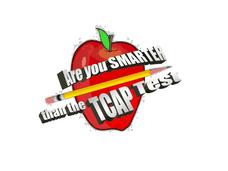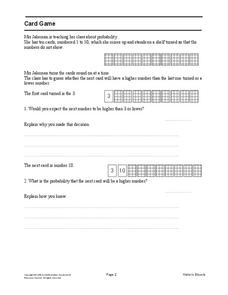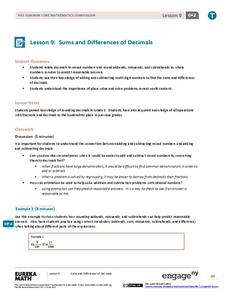Curated OER
Gases Lighter and Heavier than Air
Young scholars explore the concept of air density. In this air density lesson, students fill balloons with helium and carbon dioxide. Young scholars determine which gases are heavier or lighter than air.
Curated OER
Larger-Than-Life Lara
Learners explore child psychology by reading a children's book in class. In this bullying lesson plan, students read the book Larger Than Life Lara and discuss the characters and how they treat each other. Learners answer study questions...
Curated OER
Breaking English News: Children Into Computers Younger Than Ever
In this ESL/ELL reading and listening comprehension worksheet, students read or listen to an article entitled, "Children Into Computers Younger Than Ever." They complete discussion activities, and matching, true or false, fill in the...
Zaner-Bloser
More Letters Than Sounds
This spelling practice, appropriate for fourth graders, is a neat and useful worksheet to assign as homework. For all 20 words, there are more letters than are heard when read out loud.
Curated OER
Are You Smarter Than the TCAP Math Test?
This PowerPoint allows students to review for the fifth grade TCAP math test. The PowerPoint is designed after the show, "Are You Smarter Than a Fifth Grader?" and has various review questions based on the math curriculum.
Curated OER
Real Ice Ages Longer Than Movie Ice Ages
If your class's knowledge of the Ice Age is limited to animated movies, use this lesson plan to strengthen their knowledge. After sharing what they know about the Ice Age, young readers explore a news article seeking to dispel...
Scholastic
Study Jams! Skeletal System
A dazzling display colorful computer-generated images, x-rays, and photographs create a comprehensive introduction to the skeletal system. With 12 slides in all, aspiring anatomists learn that there are 206 bones in the human body and...
Curated OER
Exponential Growth versus Linear Growth II
Your algebra learners discover that exponential functions, with a base larger than one, outgrow linear functions when the inputs increase sufficiently. Their analysis includes using a graphing calculator to produce tables.
Mathematics Assessment Project
Card Game
Middle schoolers use 10 cards to determine whether the probability that the next card chosen is higher or lower than the previous.
Colorado State University
Can You See Beyond the Rainbow?
There's more to light than ROYGBIV! An enlightening laboratory investigation has learners explore the world of infrared light. When they use goggles that take away visible light, they experience how things look with only infrared light.
EngageNY
Sums and Differences of Decimals
Sometimes dealing with decimals is so much easier than dealing with fractions. The ninth lesson in a 21-part module has the class consider situations when it might be easier to add or subtract fractions by first converting to decimals....
Curated OER
Larger Than Life
Students research the Spanish artist Francisco de Goya and his use of fantasy and allegory in his artwork. After reading either classic or contemporary fantasy stories, they discuss how Goya might have illustrated the stories. Students...
Curated OER
Modern World Leaders Quiz
To understand current events, one must know the players involved. Upper graders will match 12 of the world's current leaders to the country they preside over. Leaders on this list include, but are not limited to, Asif Ali Zardari, Barack...
Bowland
In the Olympics, are Women Improving Faster than Men?
Will the time come when women outperform men at the Olympic Games?Scholars investigate gender differences in Olympic Games performances. They study the historical participation of women and then analyze data to determine if women will...
Colorado State University
Why Can Warm Air "Hold" More Moisture than Cold Air?—Vapor Pressure Exercise
Does it feel a little humid in here? Learners assume the role of water vapor in the atmosphere as they explore the differences between warm and cold air. They roll dice to determine their level of energy, which determines if they stay...
Breaking News English
The World Is 0.28% More Peaceful Than a Year Ago
Some days, the world seems like it is becoming darker, but research suggests that the world might actually be becoming a more peaceful place. An informational reading passage accompanied by a series of activities builds English language...
Curated OER
Smaller Than One
Students examine how to convert fractions into decimals and percents. They work with base ten blocks and a worksheet to color in parts of 100 and renaming the parts as decimals and fractions.
Busch Gardens
Create an Invertebrate
What better way for young biologists to learn about invertebrates than by creating their very own? Here, students are assigned a set of invertebrate characteristics and are asked to invent an imaginary ocean animal and a separate...
Curated OER
Fluency Passages, 3rd Grade
What would it be like to travel in a covered wagon? Learn about the life of a pioneer with a short informational reading passage. Kids read four paragraphs about traveling in a covered wagon and how it is different than traveling today,...
EngageNY
Interpreting Correlation
Is 0.56 stronger than -0.78? Interpret the correlation coefficient as the strength and direction of a linear relationship between two variables. An algebra lesson introduces the correlation coefficient by estimating and then calculating it.
EngageNY
How Do Dilations Map Segments?
Do you view proofs as an essential geometric skill? The resource builds on an understanding of dilations by proving the Dilation Theorem of Segments. Pupils learn to question and verify rather than make assumptions.
Peace Corps
Brief Encounters
How are Pandyas different than Chispas? Explore cultural norms and societal behaviors with an engaging role-play activity. Split into groups of two hypothetical cultural groups, the formal Pandyas and the sociable Chispas, and another...
CK-12 Foundation
Light Wave
Do radio waves create light? It's more difficult to understand the things we can't see than those that we can. The simulation compares the relatively small range of visible light to the entire electromagnetic spectrum. It graphs the size...
Polar Trec
Drawing Diatoms like Ernst Haeckel
Why do scientists rely on drawings rather than just photographs of their research studies? The lesson introduces drawings of microscopic organisms and the importance of accuracy. Young artists draw organisms and learn why focus and...
Other popular searches
- Thanksgiving
- Thanksgiving Math
- Thanksgiving Math Worksheets
- Thanksgiving Writing
- Thanksgiving Math Graph
- Thanksgiving Art
- Thank You Ma'am
- Thanksgiving Activities
- History of Thanksgiving
- First Thanksgiving
- Thanksgiving Writing Prompts
- Thank You Letter Writing

























